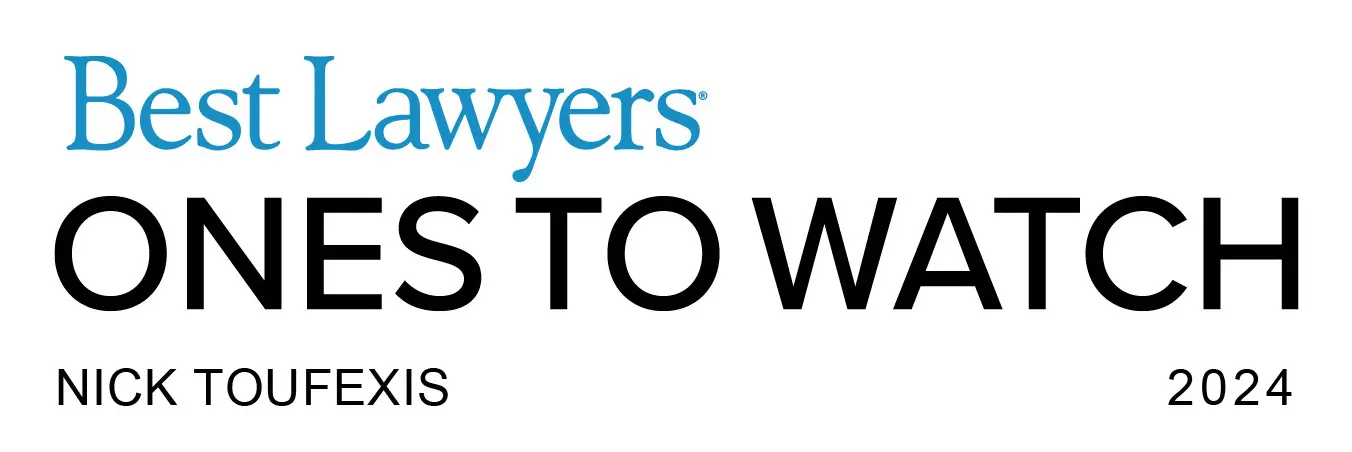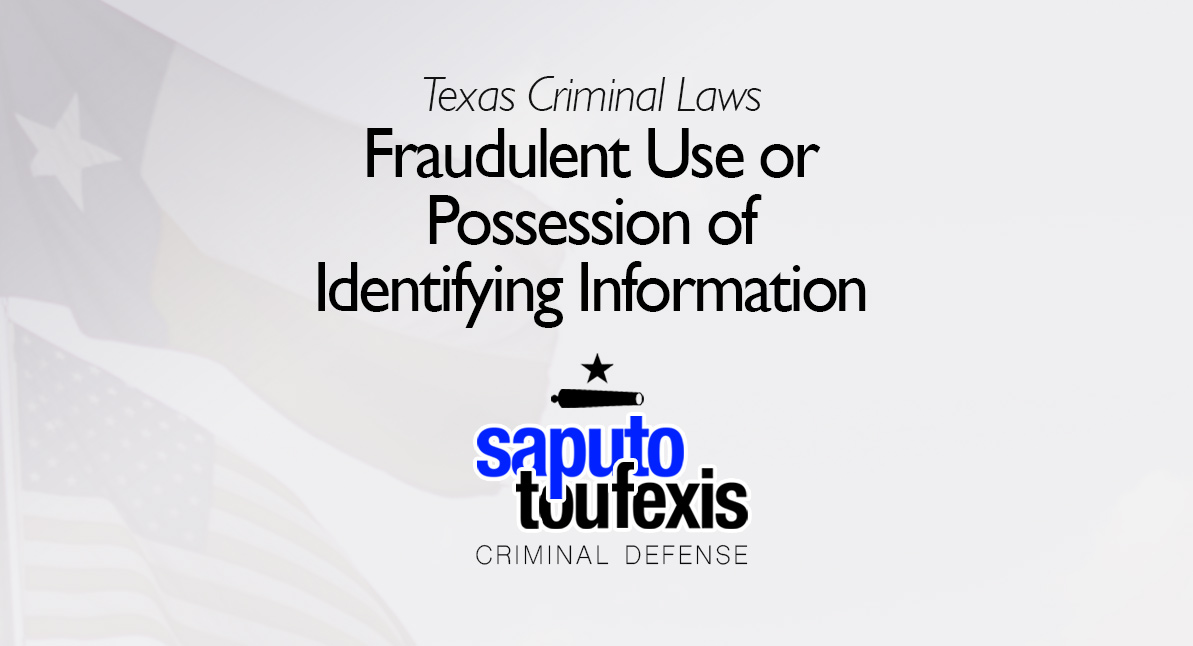The Texas Fraudulent Use or Possession of Identifying Information law makes it illegal to have someone else’s ID or other identification documents without that person’s permission, but only if you intended to cause some harm or commit fraud.
FAQs about the
Fraudulent Use or Possession of Identifying Information law in Texas
- What is the current Texas law about Fraudulent Use or Possession of Identifying Information?
- How can I be charged with a Fraudulent Use or Possession of Identifying Information offense in Texas?
- What is the statute of limitation for Fraudulent Use or Possession of Identifying Information in Texas?
- What is the penalty for a Texas Fraudulent Use or Possession of Identifying Information offense?
- Can you get probation for Fraudulent Use or Possession of Identifying Information in Texas?
- What level of crime is Fraudulent Use or Possession of Identifying Information in Texas?
The Fraudulent Use or Possession of Identifying Information law is one of the identity theft laws in Texas. Fraudulent Use or Possession of Identifying Information is the Texas ID Theft law, and it prohibits a obtaining, possessing, transferring, or otherwise using any of the listed identity items.
Have you been charged with Fraudulent Use or Possession of Identifying Information? Contact us today to discuss legal representation.
or Text or Call (888) 239-9305
If the ID belonged to someone under 18 years old, then using the ID with the intent to harm or defraud another is an offense regardless of whether the juvenile consented. Also, note that the government may accuse you of having a bad intent even if you didn’t really mean any harm. For example, the law says that the government may presume you intended to cause harm under certain circumstances, described in more detail below.
The Texas legislature codified this criminal offense in Texas Penal Code Section 32.51. The law was not amended in 2023. The law was most recently amended in 2019.
The Penal Code classifies the Texas Fraudulent Use or Possession of Identifying Information law under Title 7 “Offenses Against Property,” Chapter 32 “Fraud.” Learn more about the Texas offense of Fraudulent Use or Possession of Identifying Information below.
What is the current Texas law about Fraudulent Use or Possession of Identifying Information?
Texas law currently defines the offense of Fraudulent Use or Possession of Identifying Information in Penal Code Section §32.51 as follows:[1]
(b) A person commits an offense if the person, with the intent to harm or defraud another, obtains, possesses, transfers, or uses an item of:
(1) identifying information of another person without the other person’s consent or effective consent;
(2) information concerning a deceased natural person, including a stillborn infant or fetus, that would be identifying information of that person were that person alive, if the item of information is obtained, possessed, transferred, or used without legal authorization; or
(3) identifying information of a child younger than 18 years of age.
(b-1) For the purposes of Subsection (b), the actor is presumed to have the intent to harm or defraud another if the actor possesses:
(1) the identifying information of three or more other persons;
(2) information described by Subsection (b)(2) concerning three or more deceased persons; or
(3) information described by Subdivision (1) or (2) concerning three or more persons or deceased persons.
(b-2) The presumption established under Subsection (b-1) does not apply to a business or other commercial entity or a government agency that is engaged in a business activity or governmental function that does not violate a penal law of this state.
Amendments effective in 2019
The “or effective consent” in subsection (b)(1) was added by the Texas legislature effective as of September 1, 2019.[2]
How can I be charged with a Fraudulent Use or Possession of Identifying Information offense in Texas?
You can be charged with Fraudulent Use or Possession of Identifying Information if the state’s attorneys believe that each of the elements of §32.51(b) as described in the section above have been met.
In addition, the it is presumed that you intended to cause harm if the you possessed identifying information of three or more different people.[3] Presumptions are not the same things as conclusions, however. Presumptions are always rebuttable.
What is the statute of limitation for Fraudulent Use or Possession of Identifying Information in Texas?
Fraudulent Use or Possession of Identifying Information has a seven year limitations period under Texas law.[4]
What is the penalty for a Texas Fraudulent Use or Possession of Identifying Information offense?
If the number of items obtained or used is 5 or less, then a conviction for Fraudulent Use or Possession of Identifying Information is punished as a State Jail Felony,[5] with a maximum possible fine under Texas state law of up to $10,000 and jail time of up to two years.
If the number of items obtained or used is 5 or more but less than 10, then a conviction for Fraudulent Use or Possession of Identifying Information is punished as a Felony of the Third Degree,[6] with a maximum possible fine under Texas state law of up to $10,000 and prison time of up to 10 years.
If the number of items obtained or used is 10 or more but less than 50 then a conviction for Fraudulent Use or Possession of Identifying Information is punished as a Felony of the Second Degree,[7] with a maximum possible fine under Texas state law of up to $10,000 and prison time of up to 20 years.
If the number of items obtained or used is more than 50 then a conviction for Fraudulent Use or Possession of Identifying Information is punished as a Felony of the First Degree,[8] with a maximum possible fine under Texas state law of up to $10,000 and prison time of up to 99 years.
In addition, the punishment may be enhanced to the next higher category of offense if it was committed against an elderly person or in an attempt to avoid sex offender registration.[9]
Can you get probation for Fraudulent Use or Possession of Identifying Information in Texas?
The Texas Code of Criminal Procedure allows both judges and juries to grant probation for Fraudulent Use or Possession of Identifying Information, and judges are also allowed to accept deferred adjudication plea deals.[10]
Note, however, that no matter the offense, neither judges nor juries may recommend community supervision for any suspended sentence of over 10 years.[11] Also, judges may not grant community supervision after a conviction if (1) the defendant used or exhibited a deadly weapon during the commission of the felony or immediate flight thereafter and (2) the defendant used or exhibited the deadly weapon himself or was a party to the offense and knew that a deadly weapon would be used or exhibited.[12]
What level of crime is Fraudulent Use or Possession of Identifying Information in Texas?
The Penal Code classification of the punishment for Fraudulent Use or Possession of Identifying Information ranges from a state jail felony to a first degree felony, depending on the number if items involved.
Learn more about the penalty range for this offense in the section above.
Legal References:
^1. Texas Penal Code §32.51. This law is current as of 2024.^2. HB 2697, 86th Texas Legislature, Section 2^3. Texas Penal Code §32.51(b-1)^4. Code of Criminal Procedure 12.01(3)(G)^5. Texas Penal Code §32.51(c)(1)^6. Texas Penal Code §32.51(c)(2)^7. Texas Penal Code §32.51(c)(3)^8. Texas Penal Code §32.51(c)(4)^9. Texas Penal Code §32.51(c-1)^10. See Chapter 42, Texas Code of Criminal Procedure, Art. 42A.054, Art. 42A.056, Art. 42A.102^11. Art. 42A.053(c), Texas Code of Criminal Procedure^12 Art. 42A.054(b), Texas Code of Criminal Procedure










